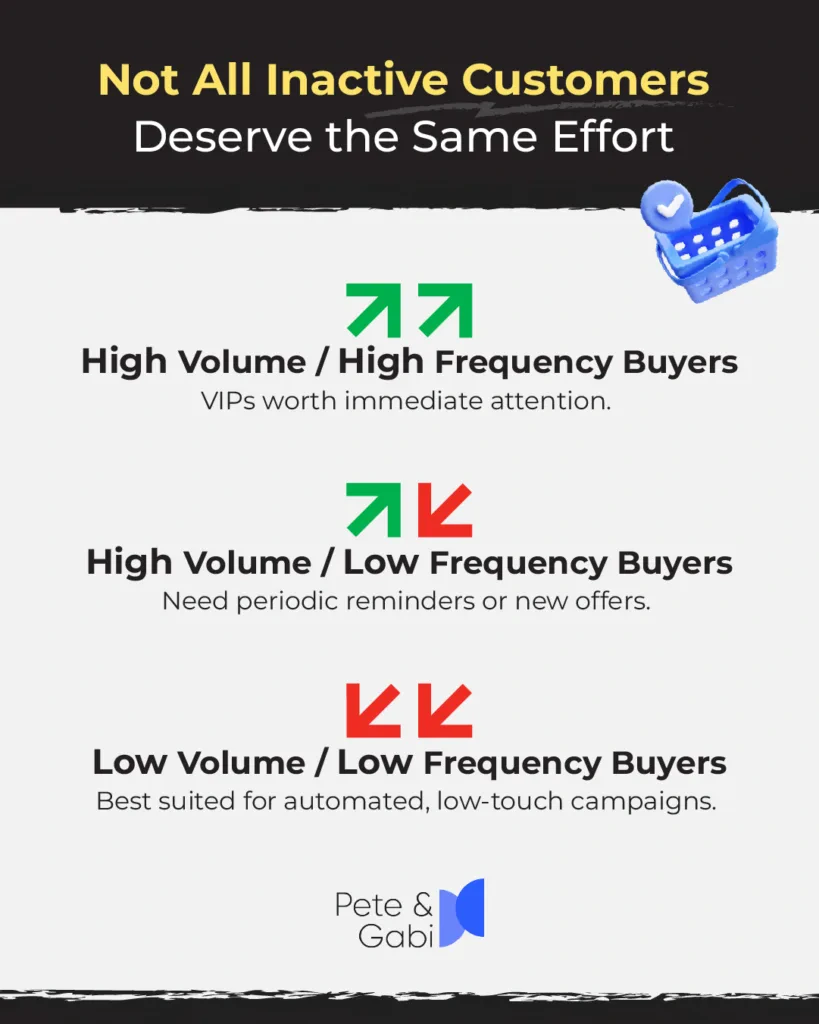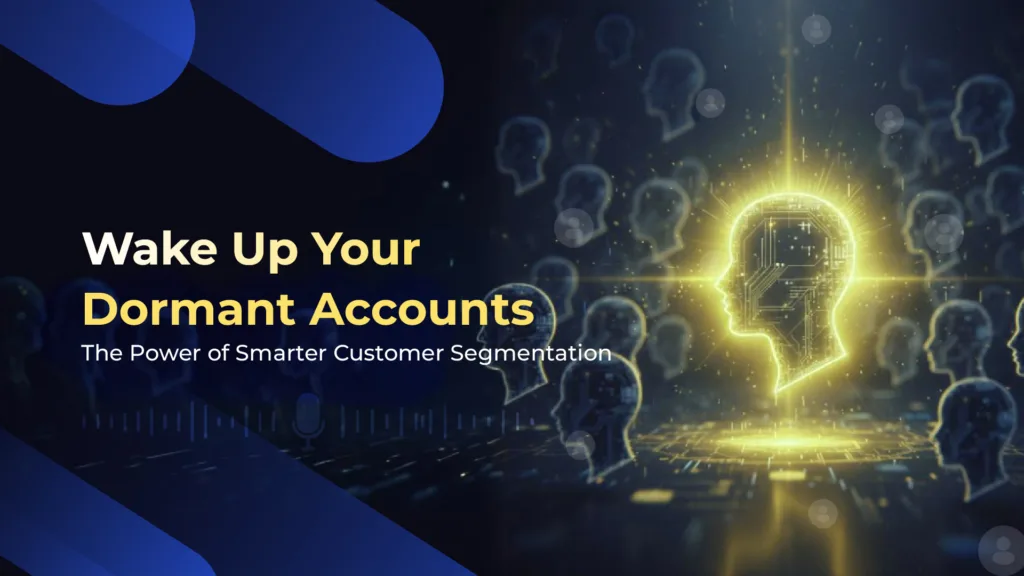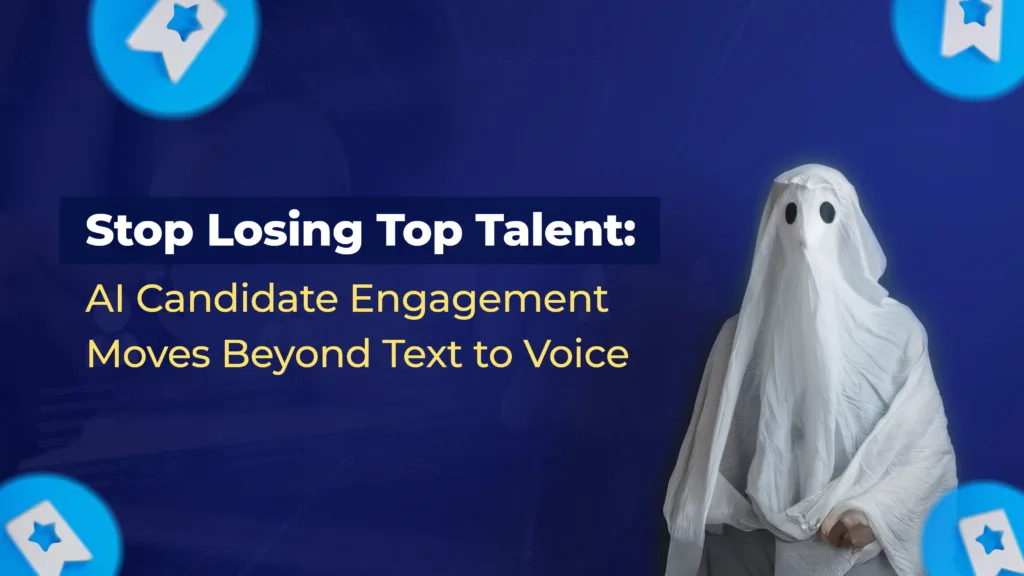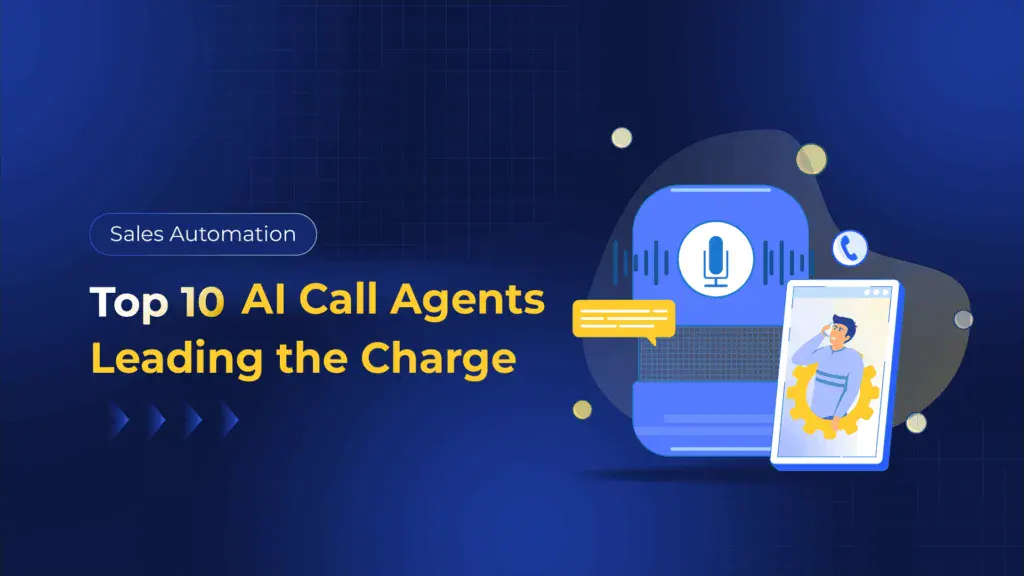Dormant or inactive customers could be your hidden revenue goldmine.
Did you know that starting a loyalty program increases the chances of existing customers buying from you again by 30 to 60%?
That’s just one example of thousands of potential dollars quietly waiting for a reactivation strategy.
So how do you bring this dormant revenue to life?
By combining AI call agents geared on customer reactivation with smart segmentation—understanding which customers are worth re-engaging, how to reach them, and when.
In this article, we’ll break down why customer segmentation is key to reviving inactive accounts and how conversational AI makes the process effortless.
What Is Customer Segmentation (And Why It’s Not Just Marketing Fluff)

Customer segmentation means grouping your buyer database into categories to create more targeted and personalized marketing campaigns.
This also makes it possible to deliver customer experiences that are more effective and relevant to each group.
Forget the outdated “age and location” spreadsheets. Modern segmentation is about customer behavior, not just who they are.
How do they actually engage with your business? Who clicks? Who ghosts, and who’s one personalized nudge away from reactivating?
Many companies choose to segment their customers based on the following categories:
- Behavioral Data: Clicks, purchases, and interactions
- Lifecycle Stage: New, active, or dormant customers
- Engagement Level: Loyal buyers vs. quiet observers
This article focuses on inactive customers in the lifecycle stage. As we’ll get to, this just means passive and reactivating a customer who already knows your brand is easier, cheaper, and far more rewarding than chasing all new leads.
The ROI of Segmenting Your Dormant Customers
Imagine outreach with renewal offers to high-value dormant accounts who left due to pricing. At the same time, you’re also reaching out to one-time buyers with educational content about features they never used.
That’s targeted reactivation versus the “spray and pray” approach. The latter wastes your budget on customers who’ll never return.
Here are several benefits to creating intentional segmentation before targeting your inactive customers.
- Targeted Messaging Slashes Reactivation Costs: Segmentation lets you match offers to dormancy reasons, eliminating wasted outreach on lost causes. It focuses the budget on accounts with genuine revival potential at lower cost.
- Relevant Outreach Accelerates Conversions: When you segment your database according to why customers left (like pricing, features, usage), you can target each segment with messaging that address their specific concerns directly. This improves their chances of reactivation.
- Segmentation Unlocks Higher Lifetime Value: Tailored reactivation based on behavior patterns helps returning customers engage with the right products immediately, leading to greater spend than their originally estimated lifetime value.
- Personalized Revival Builds Lasting Loyalty: Finally, customers who return because you addressed their specifics (not just blasting everyone) feel understood and valued. This improves their loyalty to your brand.
At the end of the day, targeting specific dormancy reasons always wins against generic “we miss you” campaigns.
5 Critical Questions to Ask Before Creating Segmentation for Inactive Customers
Before you can win back dormant accounts, you need to understand who they are and why they’ve slipped away.
This begins by asking better questions, helping you uncover insights that turn inactive accounts into revenue.
Here are five questions every organization should be asking when it comes to segmenting their inactive accounts:
1. Have You Defined What “Inactive” Means for Your Business?
Dormancy looks different for every business.
For a retail brand, it might mean 90 days without a purchase, while for SaaS, it could mean six months of login inactivity. In B2B distribution, a dormant account may mean one missed reorder cycle.
Defining “inactive” with precision helps you separate customers who are truly lost from those who just need a reminder or nudge. Without such clear criteria, you may waste resources chasing customers who haven’t really disengaged—or worse, overlook the ones who have.
A good place to start is by mapping your customer lifecycle stages and aligning your segmentation triggers to match.
2. Do You Know Why They Stopped Buying?
Every dormant account has a story—and understanding that is half the battle.
- Did a key decision-maker leave?
- Was there a bad customer experience, a missed follow-up?
- Maybe their budget changed?
Segmenting by reason for churn helps you customize your outreach. A price-sensitive customer, for example, deserves a different message than one who left due to poor service.
Understandably, reaching out to tons of inactive customers can be an overwhelming ask. This is where our second point—conversational AI agents—comes into play.
AI agents help you reach out to dormant accounts at scale, conducting discovery conversations that reveal whether it was pricing, product fit, service issues, or simply timing.
They help you tailor your reactivation strategy to address the real reasons for dormancy, not make assumptions.
3. Do You Know Which Inactive Customers Are Actually Worth Chasing?
Not all customer inactivity has the same repercussion.
A customer who placed 20 high-volume orders but hasn’t reordered in six months is far more valuable than a one-time buyer who disappeared after their first purchase.
Segmenting dormant customers by order frequency and spend value helps you prioritize your outreach intelligently.

When segmentation follows buying patterns, your team stops guessing who to reach out to and starts acting with precision on the evidence.
Effective reactivation isn’t just about making contact. It’s about making contextual outreach that resonates with each customer.
4. Can You Identify Your ‘House Accounts’ That Went Dark?
Some of your most profitable “house accounts” may have quietly gone dark simply because you assumed they were secure. These can be large clients and repeat buyers managed by senior sales reps—accounts that slip into inactivity unnoticed.
By analyzing customers by account value, historical purchase volume, or assigned relationship owner, teams can quickly identify high-potential revenue gaps before they widen.
This data-driven visibility helps prioritize reactivation efforts where they matter most—among customers who have already proved their worth.
Losing a loyal account is one of the costliest forms of churn.
5. How Does Sales Rep Turnover Affect Your Customer Base?
Asking this question helps you know if a customer’s reason for dormancy is a problem with your product or just plain old neglect.
Sales team transitions often create unintentional blind spots in customer engagement. For instance, when a rep leaves, the relationships they built may not transfer smoothly, which means some accounts fall through the cracks.
Segmenting inactive customers by previous ownership or representative can help uncover clusters of accounts that went silent after a personnel change.
This insight makes it easier to reassign outreach responsibilities, maintain relationship continuity, and ensure no customer is left unattended because of internal shifts.
The Payoff: Don’t Let Dormant Accounts Stay Silent
Segmentation is the difference between generic customer reactivation outreach and conversations that resonate.
By segmenting intentionally, you identify who’s ready to re-engage, why they left, and what will bring them back. This results in lower reactivation costs, faster conversions, and stronger relationships.
When paired with conversational AI, customer reactivation campaigns become dynamic, data-driven conversations that feel personal and drive business outcomes at scale.
Modern segmentation gives you clarity on how to target each customer group. Voice AI helps you start the conversation that brings them back.
Ready to turn your dormant list into active conversations?
Let Pete & Gabi reach and re-engage your customers with intelligent, human-like outreach that turns silence into sales. Schedule a demo today.
FAQs
Why does customer segmentation matter for reactivation?
Customer segmentation divides your inactive customers into meaningful groups based on shared traits like purchase history or churn reason. This helps you create targeted campaigns for each segment that increase success rates.
How do I identify which inactive customers are worth re-engaging?
Start by analyzing historical purchase data, lifetime value, and churn reasons. Look for customers with strong past engagement or high order values. These often yield the greatest ROI when reactivated.
How can AI call agents improve customer reactivation campaigns?
AI call agents automate personalized conversations at scale. They reach hundreds of inactive customers simultaneously, identify buying signals in real time, and reintroduce your offering in a natural, human-like way.
Do AI agents replace sales reps or work alongside them?
They work alongside your sales team. AI agents handle the initial outreach, qualification, and handoff. Your reps focus on high-intent leads and deep relationship building.
What kind of results can businesses expect from combining segmentation with conversational AI?
Companies that blend data-driven segmentation with AI-powered outreach typically see faster conversions, lower reactivation costs, and improved customer retention.











